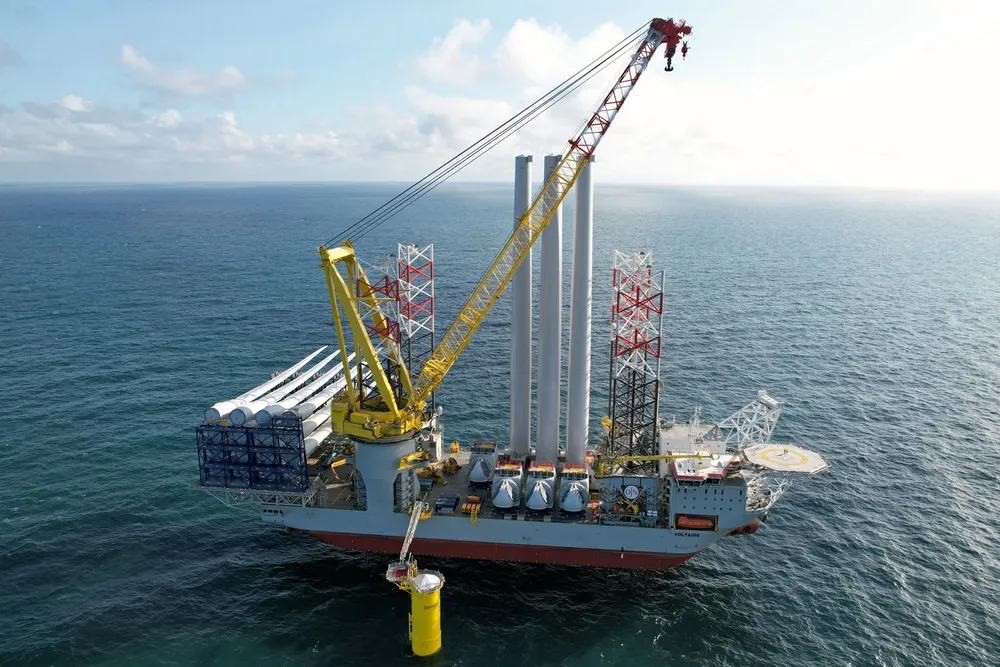Offshore wind investment drops by more than half amid sector struggles: BNEF
Dramatic drop in offshore wind investment drags down spending on renewable energy generally for first half-year period since Covid-19 outbreak in 2020, finds report

Investment in the struggling offshore wind sector has dropped by more than half year-on-year, BloombergNEF has found – although clean power globally has surged to a new record share of electricity supply.
Global offshore wind spending was down 56% in the first half of this year compared to the same period in 2023, said BNEF in a report released on Tuesday.
The sagging offshore figures dragged investment in wind generally down 26% compared to the second half of last year, and 11% on the first half, to $90.7bn, said BNEF – its lowest level in three years.
BNEF stressed that the offshore wind sector “tends to be driven by the timing of large projects from government auction calendars.”
Onshore wind investment, some of which also revolves around those auctions, was meanwhile up 13% on the first half of 2023.
A sixth straight half-annual record for investment in the solar sector could not stop the offshore wind figures from dragging down spending on renewables generally by 11% in the first half of this year compared to the second half of last.
BNEF figures show this is the first time investment in renewables has dipped in a half year period since 2020, when the world was brought to a near-standstill by the outbreak of the Covid-19 pandemic.
BNEF said the fact that the $313bn invested in the renewables sector in the first half of the year matched that invested in the first half of last year indicates that the sector as a whole is “maintaining momentum.”
“Oil majors may be reducing their focus on renewable energy, but this hasn’t made a dent in global investment,” said Meredith Annex, lead author of the report.
“It’s clear that if there are projects ready and able to move forward, the capital will come. The focus should be on simplifying wind and solar development around the world.”
Oil majors embarked on a major investment drive in renewables during the low-interest period around the Covid-19 pandemic. They have however somewhat retreated from this in the wake of record profits they made from oil and gas amid the global energy crisis spurred by Russia’s invasion of Ukraine in 2022.
Despite the gloomy picture for offshore wind, another BNEF report released in parallel this week found that the world’s existing clean power assets hit a new record by meeting more than 40% of global electricity demand last year.
Hydropower accounted for 14.7% of the world’s electricity in 2023, while wind and solar reached a record high of 13.9% and nuclear hit 9.4%.
Wind and solar meanwhile accounted for almost 91% of global net power capacity additions last year – up from 83% the year before – compared to just 6% from fossil fuels, a record low.
“We have seen a step-change in renewable energy compared to a few years before. There’s now no question this is the largest source of new power generation, wherever you go,” said BNEF analyst Sofia Maia.
Ten economies accounted for nearly three-quarters of total renewable energy generation in 2023, said BNEF, with China standing “head and shoulders” over its nearest competitor, producing nearly a third of all global renewables output last year.
Europe saw wind rise to nearly 13% of its generation mix in 2023, the first region where it has passed the 10% mark.
And for the first time ever, BNEF found that zero-carbon technologies beat out fossil fuels in terms of installed capacity in Asia-Pacific. This was a “photo finish,” as clean power capacity hit 2.31TW, “just edging out fossil fuels at 2.29TW.”
(Copyright)